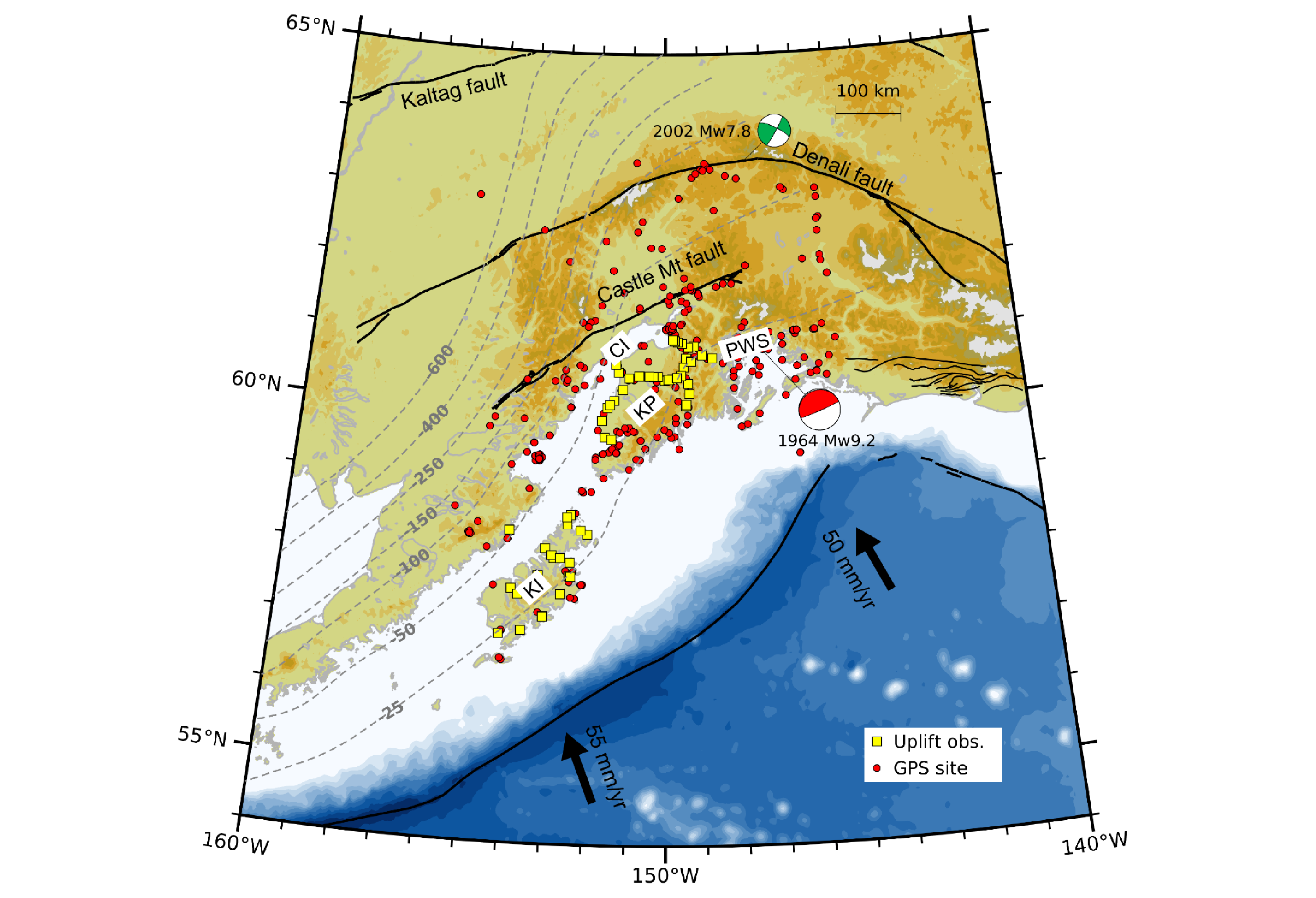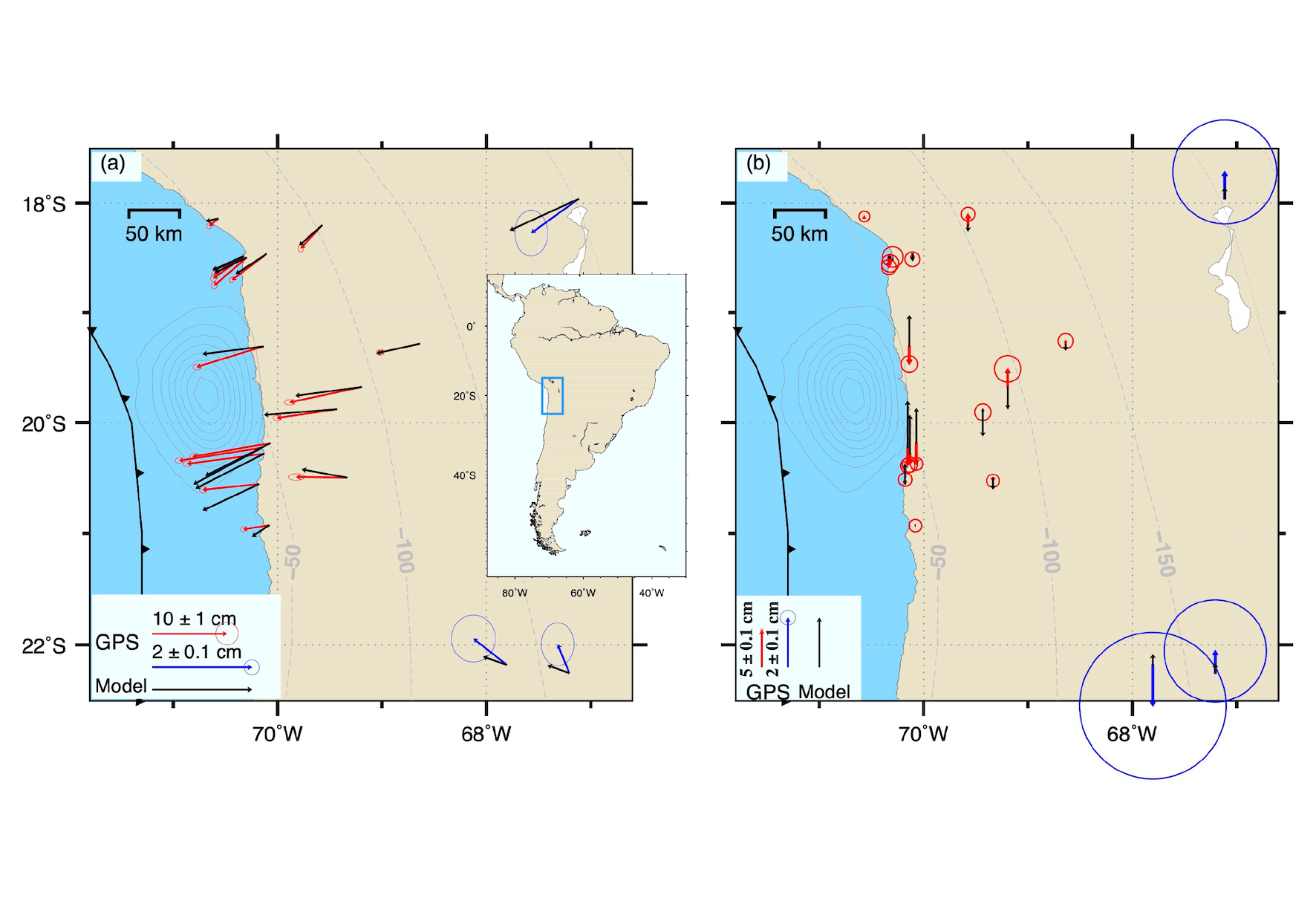


In this research, we estimate the contribution of poroelastic rebound (PE) to the 2010 Mw8.8 Maule and 2014 Mw8.1 Iquique earthquakes. The thickness and Poisson ratio of the poroelastic layer in the crust and slab are explored. The poroelastic effect is investigated through improving the fit to the postseismic residuals (GPS observations minus predictions by viscoelastic relaxation model of the earthquake). We also try to evaluate the time duration of PE in both regions. This comparative analysis may give insight into the fluid flow processes in the upper crust in the Andes Subduction Margin. Research Members: Segun Steven Bodunde, Dr. Yan Hu, Yixing Zhang, Zhiping Hu
Read More
Viscoelastic postseismic deformation after the 1964 Mw9.2 Alaska earthquake extends thousands of kilometers from the rupture region and lasts for decades, providing unique opportunities to better understand the three-dimensional rheological properties of the Alaska subduction zone. We have optimized a three-dimensional viscoelastic finite element model to study processes that control the postseismic deformation of the 1964 event. The model has determined the viscosities of the mantle wedge and shear zone to be 3 x 10^19 Pa s and 8 x 10^16 Pa s, respectively. The afterslip takes place mostly within the first 5 years after the earthquake and is up to 4 m, equivalent to a mo
Read More
An improved understanding of postseismic crustal deformation following large subduction earthquakes may help to better understand the rheological properties of upper mantle and the slip behavior of subduction interface. Here we construct a three-dimensional viscoelastic finite element model to study the postseismic deformation of the 2014 MW8.1 Iquique, Chile earthquake. Elastic units in the model include the subducting slab, continental and oceanic lithospheres. Rheological units include the mantle wedge, the oceanic asthenosphere and upper mantle. We use a 2 km thick weak shear zone attached to the subduction fault to simulate the time-dependent stress-driven afterslip.
Read MoreCopyright © Geodynamics Research Center,USTC/DSEL. All Rights Reserved.